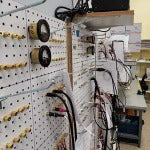- Thread Starter
- #141
no just something ive been practicing doing on cables. i personally want something with the least amount of resistance.
I see you own some Morrow Audio cables. Regardless of what you think of the sound quality difference of their cables, you must admit there are some things quite suspect about this company. For example:

Cable Break-in Service (not discountable)
NOTE: This service cannot be performed on our Ethernet, HDMI and Toslink cables. Save wear and tear on your equipment with our cable break-in service. 3, 5, 10 and 20 day service is available. Service applies to your entire order that is in the cart. We use the Hagerman Frydaddy breakin machine...
 www.morrowaudio.com
www.morrowaudio.com
A break in service for cables? And he charges you more to break them in for longer? Seems very shady to me even amongst cable manufacturers! Not even AudioQuest is greedy enough to charge people for a break in service for cables. Like.. ok saying that cables make a sound difference is one thing and we can all argue about it here, but break in for cables making a difference and then charging for it? Wow.
Also...
4. What are the improvements between models as I move up higher?
You can expect a 15% to 20% improvement in sound for each level as you move up the line. The improvements are in soundstage, resolution, realism, musical presentation, impact, etc.
Examples...
15% to 20% improvement for the SP2 compared to the SP1.
15% to 20% improvement for the SP3 compared to the SP2.
15% to 20% improvement for the SP4 compared to the SP3, etc.
There's a precise % of improvement for each cable level... despite the fact that Morrow Audio themselves claim that soundstage, resolution, impact, 'musical presentation' etc can't be measured and are qualitative! So.. how the heck is he getting these % measurements from??